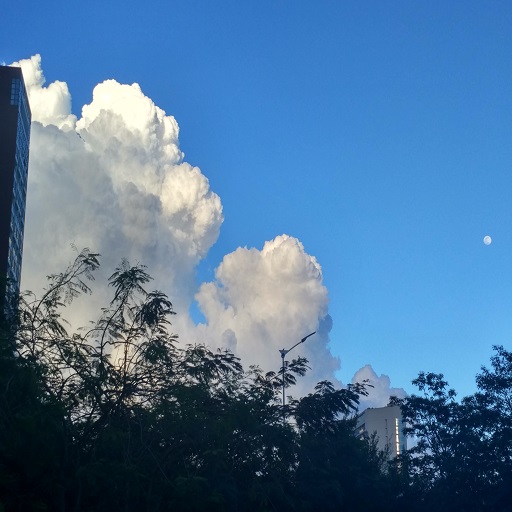记录个简单小例子帮助理解CUDA纹理参考的使用,其实和OpenGL纹理使用是一样的。
转载:https://www.cnblogs.com/riddick/p/7892663.html
CUDA纹理内存的访问速度比全局内存要快,因此处理图像数据时,使用纹理内存是一个提升性能的好方法。
贴一段自己写的简单的实现两幅图像加权和的代码,使用纹理内存实现。
输入:两幅图 lena, moon


输出:两幅图像加权和

#include <opencv2\opencv.hpp>
#include <iostream>
#include <string>
#include <cuda.h>
#include <cuda_runtime.h>
#include <device_launch_parameters.h>
using namespace std;
using namespace cv;
//声明CUDA纹理
texture <uchar4, cudaTextureType2D, cudaReadModeNormalizedFloat> refTex1;
texture <uchar4, cudaTextureType2D, cudaReadModeNormalizedFloat> refTex2;
//声明CUDA数组
cudaArray* cuArray1;
cudaArray* cuArray2;
//通道数
cudaChannelFormatDesc cuDesc = cudaCreateChannelDesc<uchar4>();
__global__ void weightAddKerkel(uchar *pDstImgData, int imgHeight, int imgWidth,int channels)
{
const int tidx=blockDim.x*blockIdx.x+threadIdx.x;
const int tidy=blockDim.y*blockIdx.y+threadIdx.y;
if (tidx<imgWidth && tidy<imgHeight)
{
float4 lenaBGR,moonBGR;
//使用tex2D函数采样纹理
lenaBGR=tex2D(refTex1, tidx, tidy);
moonBGR=tex2D(refTex2, tidx, tidy);
int idx=(tidy*imgWidth+tidx)*channels;
float alpha=0.5;
pDstImgData[idx+0]=(alpha*lenaBGR.x+(1-alpha)*moonBGR.x)*255;
pDstImgData[idx+1]=(alpha*lenaBGR.y+(1-alpha)*moonBGR.y)*255;
pDstImgData[idx+2]=(alpha*lenaBGR.z+(1-alpha)*moonBGR.z)*255;
pDstImgData[idx+3]=0;
}
}
void main()
{
Mat Lena=imread("data/lena.jpg");
Mat moon=imread("data/moon.jpg");
cvtColor(Lena, Lena, CV_BGR2BGRA);
cvtColor(moon, moon, CV_BGR2BGRA);
int imgWidth=Lena.cols;
int imgHeight=Lena.rows;
int channels=Lena.channels();
//设置纹理属性
cudaError_t t;
refTex1.addressMode[0] = cudaAddressModeClamp;
refTex1.addressMode[1] = cudaAddressModeClamp;
refTex1.normalized = false;
refTex1.filterMode = cudaFilterModeLinear;
//绑定cuArray到纹理
cudaMallocArray(&cuArray1, &cuDesc, imgWidth, imgHeight);
t = cudaBindTextureToArray(refTex1, cuArray1);
refTex2.addressMode[0] = cudaAddressModeClamp;
refTex2.addressMode[1] = cudaAddressModeClamp;
refTex2.normalized = false;
refTex2.filterMode = cudaFilterModeLinear;
cudaMallocArray(&cuArray2, &cuDesc, imgWidth, imgHeight);
t = cudaBindTextureToArray(refTex2, cuArray2);
//拷贝数据到cudaArray
t=cudaMemcpyToArray(cuArray1, 0,0, Lena.data, Width*imgHeight*sizeof(uchar)*channels, cudaMemcpyHostToDevice);
t=cudaMemcpyToArray(cuArray2, 0,0, moon.data, Width*imgHeight*sizeof(uchar)*channels, cudaMemcpyHostToDevice);
//输出图像
Mat dstImg=Mat::zeros(imgHeight, imgWidth, CV_8UC4);
uchar *pDstImgData=NULL;
t=cudaMalloc(&pDstImgData, imgHeight*imgWidth*sizeof(uchar)*channels);
//核函数,实现两幅图像加权和
dim3 block(8,8);
dim3 grid( (imgWidth+block.x-1)/block.x, (imgHeight+block.y-1)/block.y );
weightAddKerkel<<<grid, block, 0>>>(pDstImgData, imgHeight, imgWidth, channels);
cudaThreadSynchronize();
//从GPU拷贝输出数据到CPU
t=cudaMemcpy(dstImg.data, pDstImgData, imgWidth*imgHeight*sizeof(uchar)*channels, aMemcpyDeviceToHost);
//显示
namedWindow("show");
imshow("show", dstImg);
waitKey(0);
}
